Figures & data
a SA75. b USA300. c.MW2 d.SA759
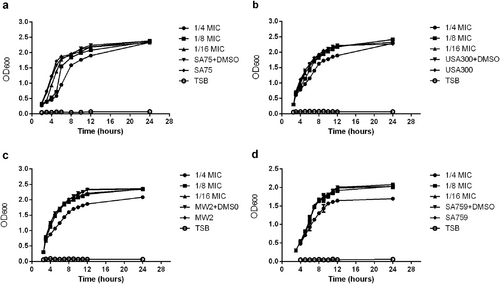
The abscissa refers to the fold-change in the two samples; the ordinate refers to the statistically significant difference in gene expression; red dots indicate a significant difference in upregulated genes and green dots indicate downregulated genes
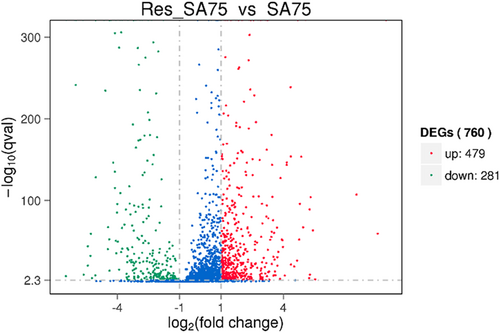
This table shows the expression changes of several important genes associated with virulence, capsular polysaccharide synthesis protein, transcription factors, two-component systems, bacterial secretion system, and metabolic function after treatment with resveratrol. The log2 (fold-change) indicates the multiples of change of Res_SA75 gene compared to SA75, p value is to determine statistically significant indicators, q value is the corrected p value, and description is based on NCBI annotations for gene description
Values are means + SDs (based on three repeated assays). There were significant differences with the control group (grown without resveratrol) for each strain (P < 0.05)

There were significant differences with the control group (grown without resveratrol) for each strain (P < 0.05). Each test was performed independently in triplicate
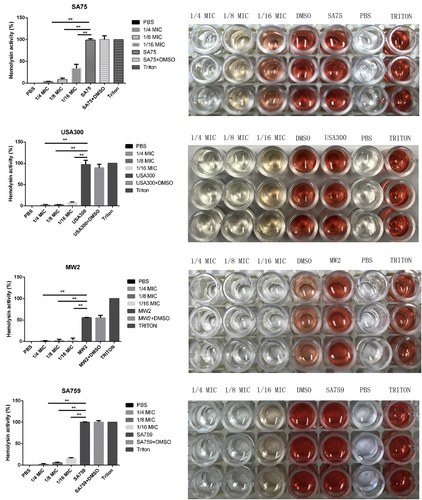
The test was performed independently in triplicate
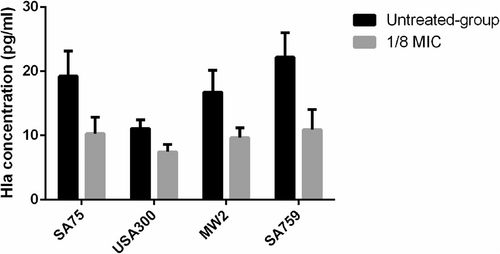
a Comparison of abscess size (area) of SA75 wild-type group and SA75-treated-group (cultured with 1/8 MIC Res). b Skin lesions resulting from S. aureus infection (picture taken at day 2 of infection)
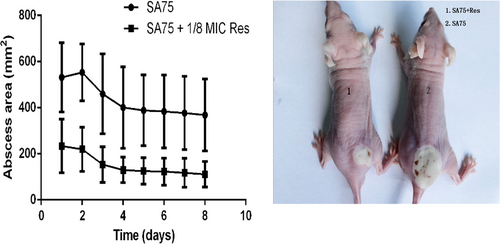
Primers used for real-time RT-PCR
